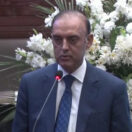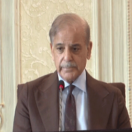By Amna Nasir Zaman
Published in The News on October 04, 2024
Pakistan’s education sector is a flagrant reflection of the country’s entrenched socio-economic and gender disparities, with low budgetary allocations further widening the divide.
Despite pledges of education emergency and pressures from global bodies to increase education budget to 4 percent of the GDP, it continues to hover around two percent. Pakistan has set aside 1.91 percent of the GDP for education in the budget for the fiscal year 2024-25.
In today’s knowledge-driven economy, education is crucial for developing human capital and driving economic development. Unfortunately, Pakistan’s education landscape is marred by an unambiguous challenge to ensure all children, particularly the most disadvantaged, attend, stay, and learn in school. Provincial budgets, no longer dictated by the federal government since the 18th amendment, often prioritize other sectors over education. This is alarming, as education is critical for participatory democracy, consensus-building, and addressing social problems.
Despite the Constitution guaranteeing “free and compulsory” education under Article 25-A, Pakistan still struggles to synergize the federal and provincial education policies to harness the potential of its youth.
In his recent visit to New York for the 79th UNGA session, Prime Minister Shehbaz Sharif reaffirmed Pakistan’s commitment to tackling pressing education and disaster recovery challenges at a high-level Sustainable Development Goals (SDG) meeting. He announced the establishment of ‘South Asia’s largest Education endowment fund’ in Punjab, a significant step towards addressing the country’s out-of-school children crisis. However, the PM acknowledged that despite these efforts, Pakistan is facing an out-of-school children crisis.
According to a fresh report by UNICEF Pakistan, it is estimated that 22.8 million children aged 5-16 are not attending school, representing 44 percent of the total population in this age group. Among the out-of-school children, 53 percent are girls and 47pc are boys. These statistics not only highlight the gender gap in service provision at all education levels but also bring forth the socio-cultural and economic barriers that constrain access and retention of certain marginalized groups, particularly adolescent girls. While the gender gap in access to education remains a daunting issue in the education sector, the widening chasm between private and public schools further exacerbates social exclusion, denying marginalized communities access to quality education and resources.
Recently, the Punjab government launched a nutrition campaign in Southern Punjab reaching out to 400,000 primary-level government school students, providing milk and nutrients to combat child malnutrition.
Although well-intentioned in terms of contributing to overall health, learning performance, increased school enrolment, and better hygiene practices, this initiative only scratches the surface of the systemic issues plaguing Pakistan’s education sector. Although it is essential to address immediate nutritional needs under the umbrella of ‘malnutrition’, it must be accompanied by comprehensive knowledge and awareness among the students.
Quality education is reserved for those who can afford high tuition fees, while government schools struggle to provide basic learning outcomes. This systemic inequality determines employment opportunities, ignoring individual capabilities and skills. The oft-touted slogan “education for all” rings hollow without a focus on “quality education for all”. Instead of addressing these disparities, the government has opted for the easy solution of running nutritional campaigns which could otherwise be well-considered in marginalized communities instead of government schools.
Pakistan’s education system has failed to bridge poverty gaps, educational gender gaps, social injustice, and oppression, intensifying socio-economic disparities. To revolutionize Pakistan’s education sector, the policymakers must prioritize education in provincial budgets, allocating sufficient funds to ensure equal access to quality education for all. This entails fully endorsing and enforcing Article 25-A, ensuring free and inclusive education for all children, particularly girls, with a focus on skill-based learning and vocational training. Gender-disaggregated data must be integrated into federal and provincial budgets to track progress.
Furthermore, updating educational curricula to align with global standards is vital, nurturing respect, tolerance, and peaceful coexistence. Finally, policy initiatives must bridge the digital divide, enhancing women’s access to modern technologies, and thereby unlocking their potential to contribute to Pakistan’s growth and development.





